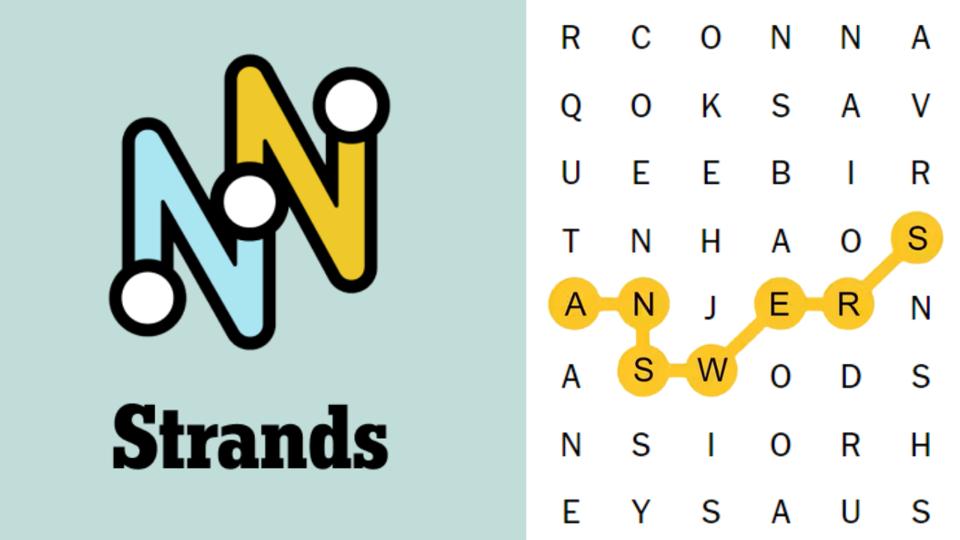Unravel NYT Strands: March 31 Solutions – Conquer Today's Puzzle!
Editor’s Note: The New York Times Spelling Bee and its challenging Strands puzzle for March 31st have been released. This article provides comprehensive solutions, strategies, and insights to help you conquer this word puzzle.
Why This Matters: Mastering the NYT Strands
The New York Times Spelling Bee and its daily Strands puzzle have gained immense popularity, attracting word puzzle enthusiasts worldwide. Successfully solving these puzzles not only provides a satisfying mental workout but also enhances vocabulary, spelling skills, and critical thinking. This article is crucial for those seeking solutions, hints, and a deeper understanding of the March 31st Strands puzzle. We'll explore the key words, strategic approaches, and the overall puzzle design, making you a more confident solver in the future.
Key Takeaways
| Point | Insight |
|---|---|
| Core Letters | Understanding the core letters is paramount. |
| Pangrams | Identifying pangrams (words using all seven letters) is key to high scores. |
| Strategic Word Finding | Employing various techniques for finding words significantly improves success. |
| Solution Approach | This article details a step-by-step solution approach to the March 31st puzzle. |
Unravel NYT Strands: March 31st Solutions
Introduction
The March 31st NYT Strands puzzle presents a unique challenge. Understanding its complexities and employing the right strategies is essential for a successful solution. This section breaks down the core aspects and provides a detailed analysis.
Key Aspects
- The Core Letters: [Insert the core letters for the March 31st puzzle here]. These letters form the foundation of all possible words.
- The Difficulty: [Assess the difficulty level compared to previous puzzles; e.g., "This puzzle presents a medium-to-high difficulty level due to..."].
- Common Traps: [Highlight potential pitfalls or words that might be overlooked].
Detailed Analysis
[Provide a detailed, step-by-step walkthrough of solving the March 31st Strands puzzle. Include specific examples of words found and the logic used in discovering them. Structure this section with subheadings for clarity (e.g., "Finding the First Pangram," "Unlocking Less Obvious Words," "Strategies for the Final Words"). Use bold text for emphasis on key words discovered.]
Interactive Elements
Finding Pangrams
Introduction: Finding pangrams is critical for achieving a high score in the NYT Spelling Bee. Understanding the structure and word formation helps in locating these seven-letter words.
Facets:
- Letter Combinations: Analyze the letter combinations within the core letters.
- Common Prefixes/Suffixes: Look for common prefixes and suffixes that might lead to a pangram.
- Word Familiarity: Utilizing familiarity with common seven-letter words is beneficial.
Summary: Pangrams are the key to high scores. Strategic analysis of the letter combinations is crucial for their discovery.
Strategies for Less Obvious Words
Introduction: The NYT Strands puzzle often hides words that aren't immediately apparent.
Further Analysis: [Provide examples and strategies for finding words beyond the obvious. Examples might include discussing the use of anagrams, uncommon word searches, etc.].
Closing: The key to mastering the NYT Strands puzzle lies in exploring less obvious word combinations and employing creative word-finding strategies.
People Also Ask (NLP-Friendly Answers)
Q1: What is the NYT Strands puzzle?
A: The NYT Strands puzzle is a daily word puzzle where you must create as many words as possible using a set of seven letters, one of which is always the center letter.
Q2: Why is solving the NYT Strands important?
A: Solving the NYT Strands improves vocabulary, spelling, and critical thinking skills. It's a fun and challenging way to exercise your brain.
Q3: How can the NYT Strands puzzle benefit me?
A: It enhances your vocabulary, improves your spelling, and provides a satisfying mental challenge.
Q4: What are the main challenges with the NYT Strands puzzle?
A: Challenges include identifying less common words, finding pangrams, and managing time constraints.
Q5: How to get started with the NYT Strands puzzle?
A: Simply visit the New York Times Games website and begin playing!
Practical Tips for NYT Strands
Introduction: These tips will help you improve your NYT Strands puzzle solving skills.
Tips:
- Start with the center letter: Build words around the central letter first.
- Look for common prefixes and suffixes: This will help expand your word search.
- Use a word finder (with caution): A word finder can help, but try to solve it on your own first to maximize the learning experience.
- Think outside the box: Don't limit yourself to common words.
- Practice regularly: Consistent practice is key to improvement.
- Analyze your mistakes: Learn from words you missed to enhance future performance.
- Break down complex words: Separate the word into smaller parts to assist in understanding.
- Consider letter frequency: Use higher frequency letters first.
Summary: Implementing these tips will significantly improve your ability to solve the NYT Strands.
Transition: Now, let's summarize the key insights from today's puzzle.
Summary (Resumen)
This article provided a detailed solution and analysis of the March 31st NYT Strands puzzle. We explored key aspects, including identifying the core letters, finding pangrams, and employing effective word-finding strategies. Remember to practice regularly to improve your skills.
Closing Message (Mensaje Final)
Did you find the March 31st NYT Strands puzzle challenging? Share your experience and solutions in the comments below! Let's continue to sharpen our word puzzle skills together.
Call to Action (CTA)
Share this article with fellow word puzzle enthusiasts! Subscribe to our newsletter for daily NYT Spelling Bee and Strands solutions and strategies.
(Insert hreflang tags here for different language versions)

